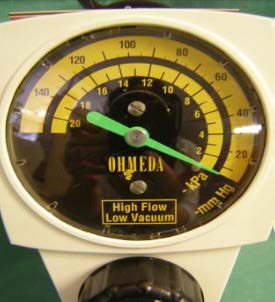Receiving a patient with an UWSD
Always check the following
- Ensure the system is set up according to manufacturer\'s guidelines to accommodate both wet and dry suction systems.
- Check all connections and ensure that they are visible and reinforced with non-stretch tape.
- Ensure the tubing is long enough to allow the patient to move comfortably without pulling on the tube.
- If using a wet seal system, ensure that the underwater seal is activated i.e. that the water level is set as per system instructions, and that the rod is immersed 2cm under the water.
- The outlet from the UWSD must be open to the atmosphere to promote escape of any air present within the pleural space. Occluding the outlet can cause tension pneumothorax. The only exception is when low wall suction is applied to the UWSD outlet to restore negative pressure to the pleural space and to promote lung re-expansion.
- Alert Suction. Set suction control according to the specific drainage system instruction. In the absence of an inbuilt suction control mechanism, use low pressure wall suction 3-5 kpa and set to the correct pressure as ordered.
- In hospitals where high level wall suction gauges are available, these should be changed to low suction gauges before any suction is applied to an UWSD system which requires low range 3-5 kpa.
Low wall suction refers to 20mmHg or 3 Kpa.
Staff should take care to accurately read suction pressure when selecting low wall suction pressure as mmHg or Kpa on the dial.

Figure 8: A low wall suction unit which displays both mmHg and Kpa.